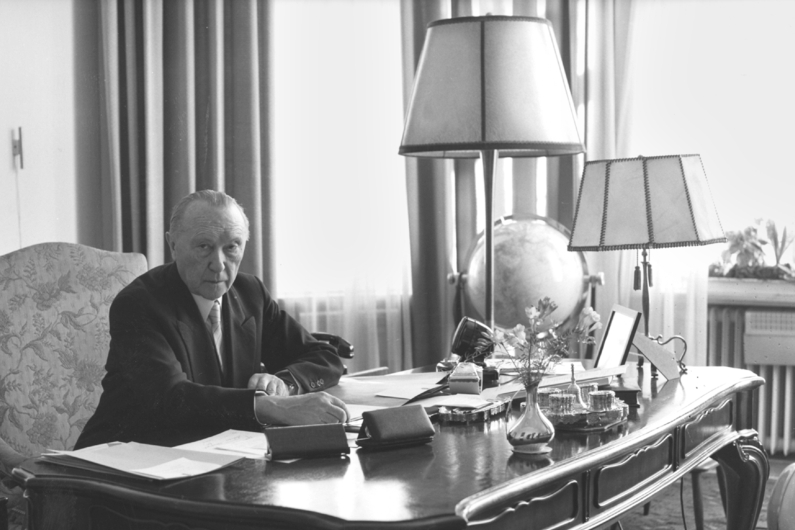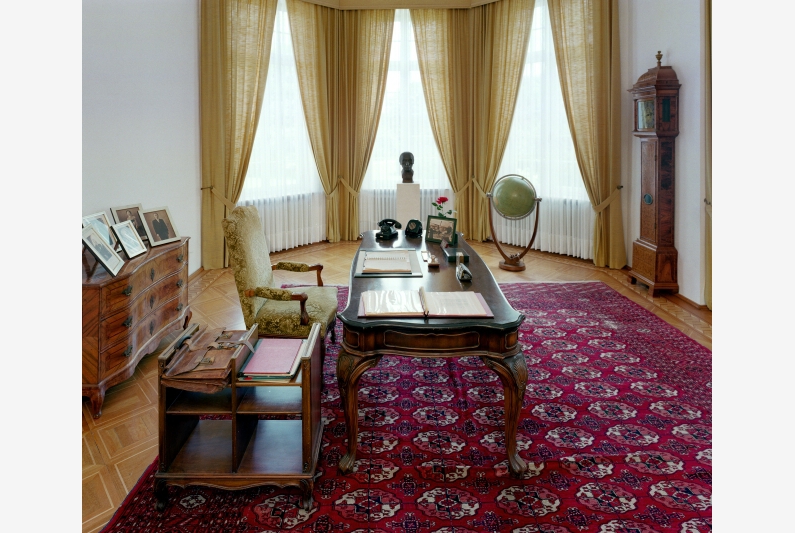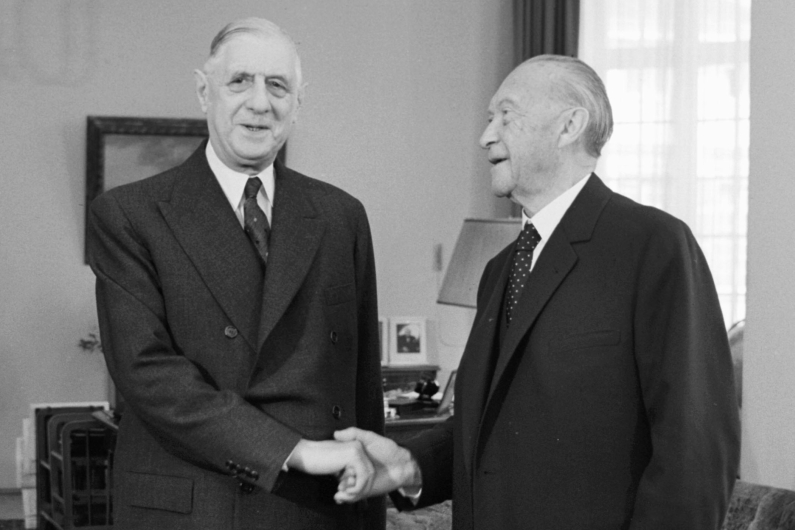The Palais Schaumburg’s modern canopy was not at all to the liking of Chancellor Adenauer, as it reminded him of a petrol station (2006).
Stiftung Haus der Geschichte/Axel Thünker
Among the members of Willy Brandt’s first cabinet were Minister of Finance and the Economy Helmut Schmidt (front left) and Interior Minister Hans-Dietrich Genscher (front right). The photo was taken on 7 November 1972.
Bundesregierung
Owing to renovation work, the Palais is currently closed to visitors. You can nevertheless view it using our online panorama.
Virtual TourChancellor Adenauer at his desk in Palais Schaumburg. The photo was taken on 8 February 1960.
Bundesregierung/Rolf Unterberg
In 1983, Chancellor Helmut Kohl invited members of the press to view the renovated study of former Chancellor Konrad Adenauer. The photo was taken in 2005.
Stiftung Haus der Geschichte/Axel Thünker
Chancellor Konrad Adenauer (right) greeting French President Charles de Gaulle at Palais Schaumburg on 4 July 1963. Two years earlier, Adenauer already stated that in his opinion, reconciliation with France was possible.
Bundesregierung/Ludwig Wegmann


